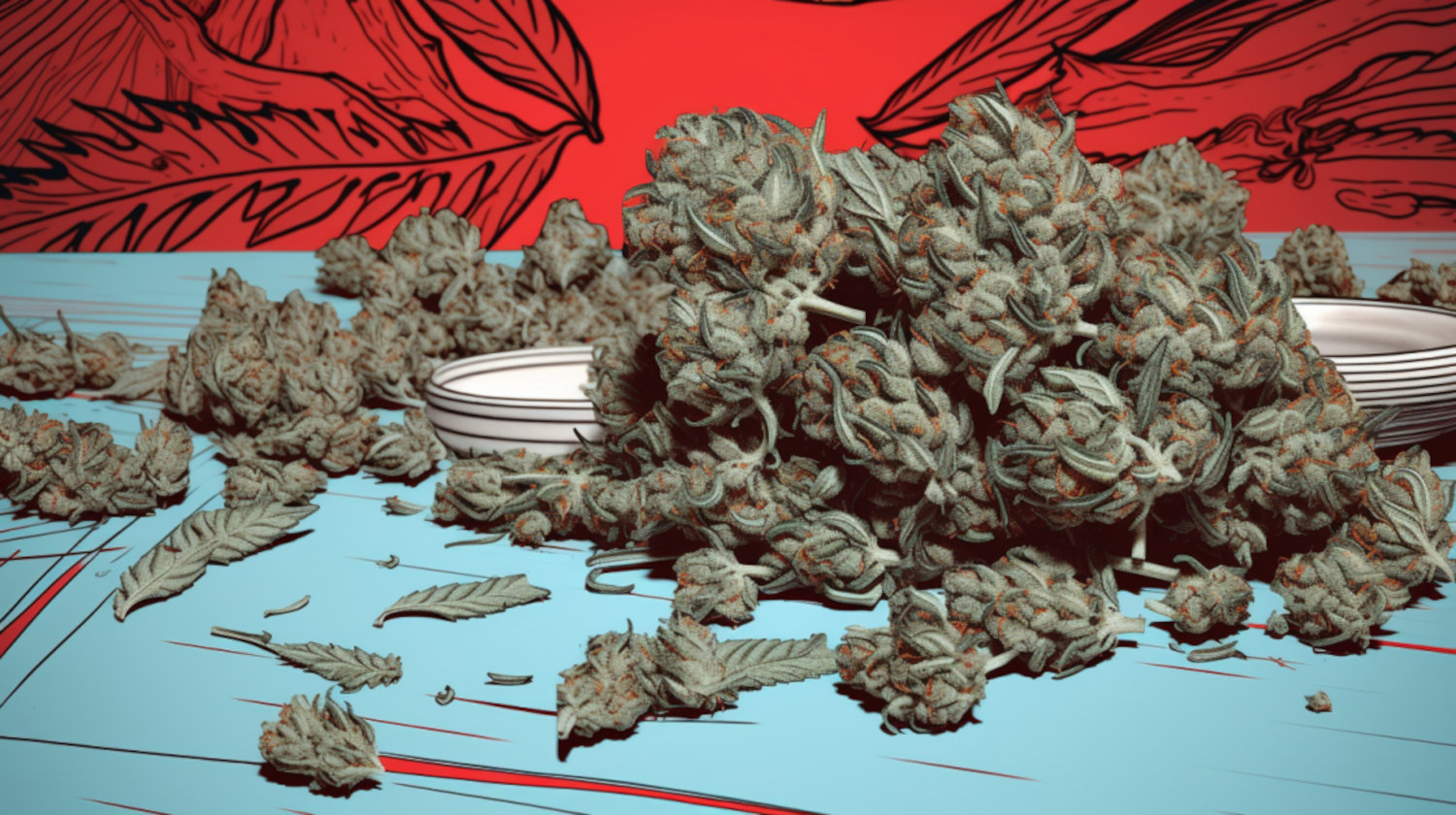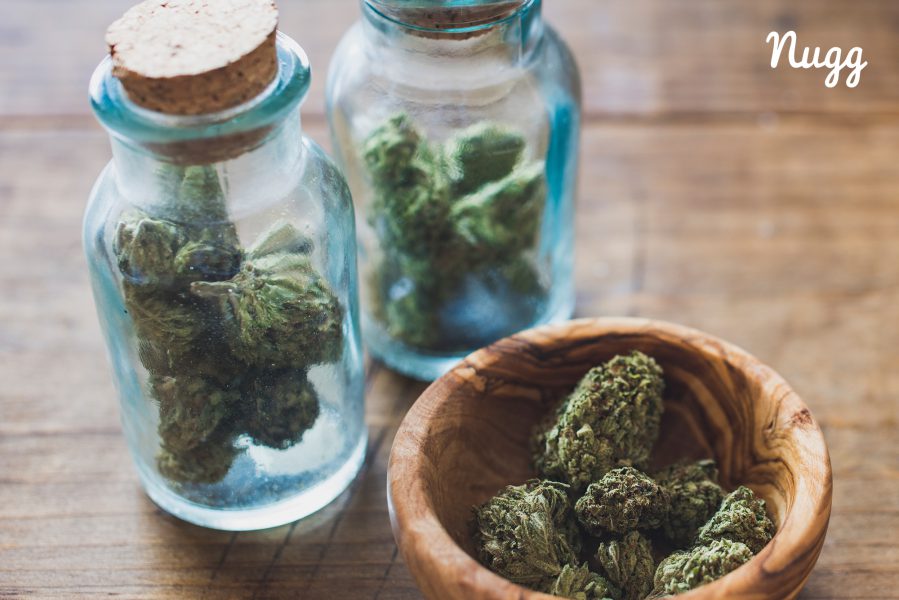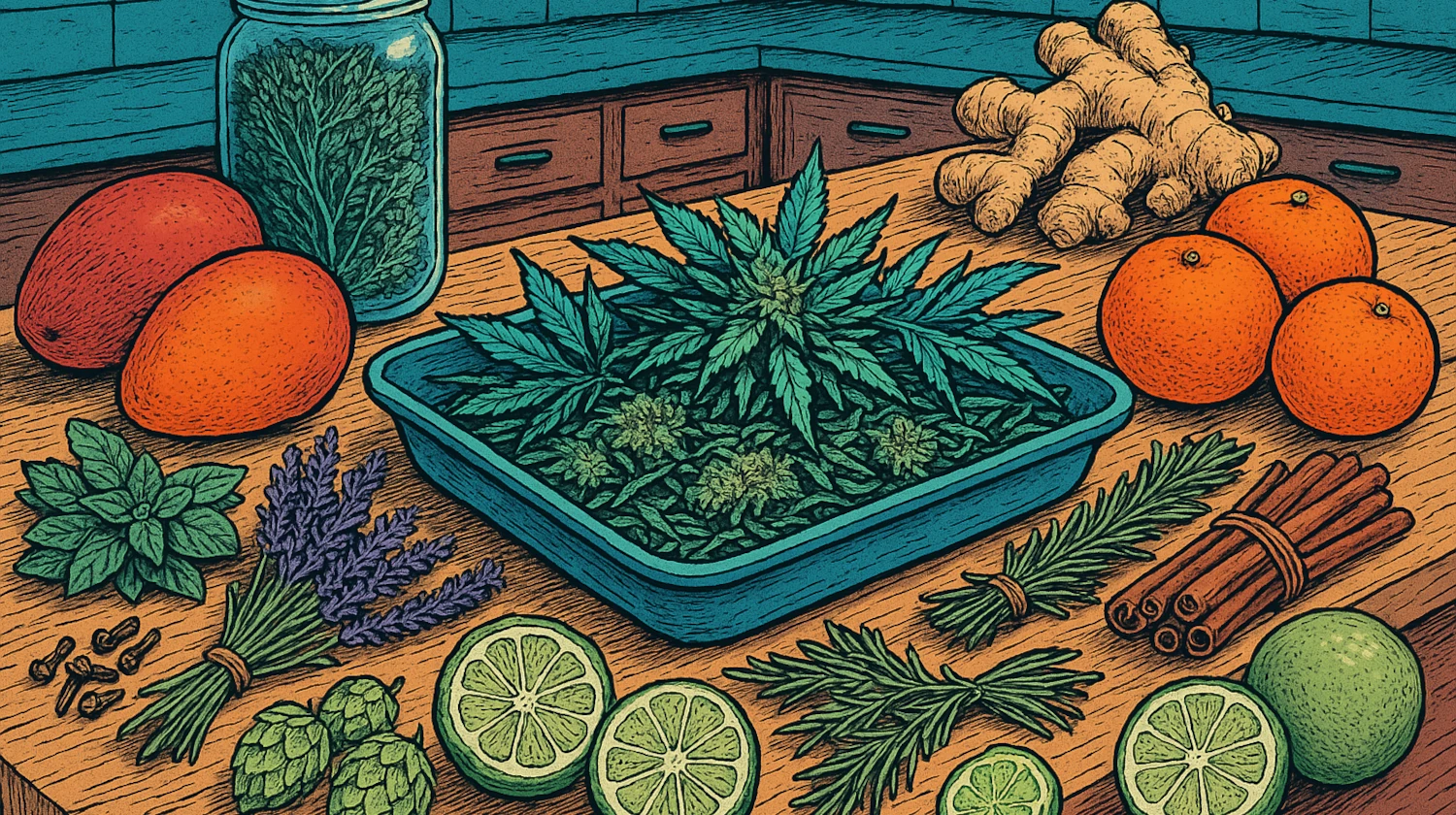In This Article
- What's Behind the Skunk Smell of Weed?
- Terpenes and the Other Cannabis Smells
- Myrcene: The Earthy Herbal Virtuoso
- Pinene: Embracing the Outdoors with Pine and Citrus
- Limonene: A Citrus Symphony with Uplifting Notes
- Camphene, Ocimene, and More: Expanding the Aromatic Palette
- Good Smell or Bad Smell is a Matter of Perception
- How to Keep Cannabis Smells From Taking Over
- Controlling Cannabis Smells: Tips and Tricks
- References
Ah, the distinct aroma of cannabis – it's something that people worldwide are undoubtedly familiar with. Whether you're a cannabis enthusiast or someone who's never taken a whiff, chances are you've heard about the notorious smell of weed. It's an aroma that evokes strong reactions from people, whether it be appreciation or outright aversion.
Perhaps no other scent has sparked as many debates, conversations, and legal discussions as this skunky smell. From Fourth Amendment search-and-seizure doctrines to public nuisance complaints, the aroma of cannabis has managed to find its way into many facets of life.1
But have you ever wondered what exactly gives cannabis its unique and unmistakable scent? What chemical wizardry is at play that makes it smell so bad (according to some) but oh-so-good (according to many others)? Come take a dive deep into the science behind cannabis aromas, and uncover the captivating secrets behind this pungent allure.
What's Behind the Skunk Smell of Weed?
When it comes to cannabis aromas, one scent stands out as the most iconic and recognizable of them all – the notorious "skunk-like" smell.
Love it or loathe it, there's no denying that the skunk odor is deeply ingrained in the cultural perception of cannabis. But what exactly causes cannabis to exude this potent and distinct fragrance? What makes weed smell like this?
The key player responsible for the skunk-like smell in marijuana is a volatile organic compound called 3-methyl-2-butene-1-thiol, commonly known as prenylthiol. This potent molecule plays a significant role in giving cannabis that pungent and memorable skunk scent.
Research has shown that the concentration of prenylthiol is strongly correlated with the intensity of the characteristic skunk-like aroma.2 It's fascinating to see that a single, tiny molecule can wield such a remarkable influence on our olfactory senses, evoking immediate associations with the infamous skunk odor.
Terpenes and the Other Cannabis Smells
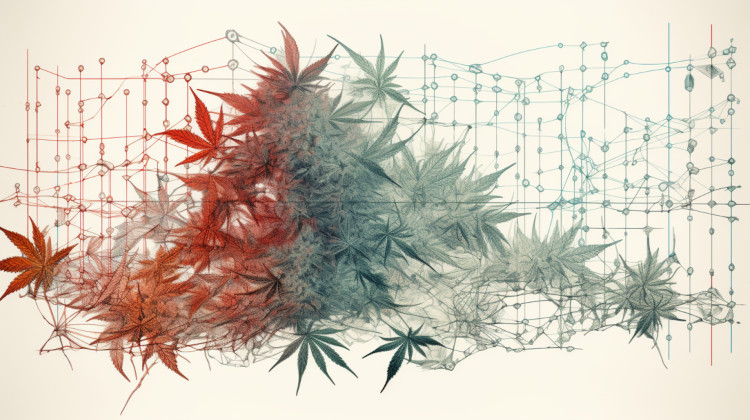
Beyond the notoriously dank skunkiness, cannabis boasts a captivating array of smells that can transport you to an aromatic wonderland. These diverse scents, responsible for the enticing allure of various cannabis strains, are all thanks to a group of organic compounds called terpenes.
These terpenes are the unsung heroes responsible for creating the rich tapestry of cannabis smells. Terpenes are essential oils found in various plants and play an integral role in the characteristic aromas and flavors of cannabis strains.
Specifically, "Terpenes (pinene, myrcene, limonene, terpinene, p-cymene) are characterized as compounds with simple hydrocarbons structures while terpenoids (oxygen-containing hydrocarbons) are defined as a modified class of terpenes with different functional groups and oxidized methyl groups moved or removed at various positions."3
Believe it or not, the average cannabis plant boasts hundreds of terpenes and terpenoids, all of which play a role in defining the particular strain's scent and flavor.4 Let’s look at some of the notable ones.
Myrcene: The Earthy Herbal Virtuoso
One of the most abundant terpenes in cannabis is myrcene. This earthy and herbal-scented terpene is found in nearly all cannabis strains and can contribute to their relaxing and sedative effects. Myrcene is also found in hops, which is why some strains share similarities with the fragrance of a hoppy beer. Besides its calming effects, myrcene is believed to have potential anti-inflammatory properties, making it an enticing option for recreational and medicinal users.5
Pinene: Embracing the Outdoors with Pine and Citrus
As the name suggests, pinene delivers an unmistakable pine aroma that evokes memories of wandering through a forest on a crisp morning. Found in strains like Jack Herer and Blue Dream, pinene is responsible for their fresh, outdoorsy scent. But pinene can also infuse strains with hints of citrus, bringing a delightful burst of lemon or lime to the mix. On a medicinal note, pinene may have bronchodilatory properties, meaning it can help relax the muscles in the lungs, making it a potential ally for respiratory health.6
Limonene: A Citrus Symphony with Uplifting Notes
Limonene, true to its name, gifts cannabis strains with a zesty and uplifting citrus aroma. Commonly found in strains like Wedding Cake, Purple Hindu Kush, and Banana OG, this terpene can cause your weed to smell like lemons, oranges, or grapefruits. As an added bonus, limonene is associated with potential mood-enhancing and anti-anxiety effects, offering users a sense of euphoria and stress relief.7
Camphene, Ocimene, and More: Expanding the Aromatic Palette
Alongside myrcene, pinene, and limonene, cannabis houses an abundance of other terpenes, each bringing its unique fragrance and potential effects. Camphene contributes to the earthy, herbal scent of certain strains, while ocimene can infuse strains with sweet and woody notes. Farnesane and a-humulene add spicy and hoppy aromas to the mix, expanding the aromatic palette of cannabis even further.
Good Smell or Bad Smell is a Matter of Perception
The smell of marijuana can be as polarizing as it is distinct. You'll find that opinions can be as diverse as the aromas themselves. Some people find the characteristic scent of weed intriguing and even pleasant, while others may be less enamored and describe it as overpowering or unpleasant.
It isn’t a surprise that whether a person uses cannabis or not can influence their perception of its smell. In fact, fMRI studies have shown that the brains of cannabis users get excited by the smell of weed.8 So, people who consume marijuana regularly may not mind stumbling upon the smell – they probably enjoy or are amused by it. However, the smell of weed in public, in particular, is increasingly becoming a cultural flash point.
Research has shown that approximately 23% of Americans dislike the smell of cannabis in public, while another 18% don't particularly enjoy it. On the other hand, 18% of respondents indicated that they like the smell when encountering it in public settings. Meanwhile, 41% said they either don't notice or don't mind the smell.
In Canada, the numbers are significantly less forgiving, with 57% expressing dislike or hatred for the smell and 60% considering it a major or minor problem.
How to Keep Cannabis Smells From Taking Over
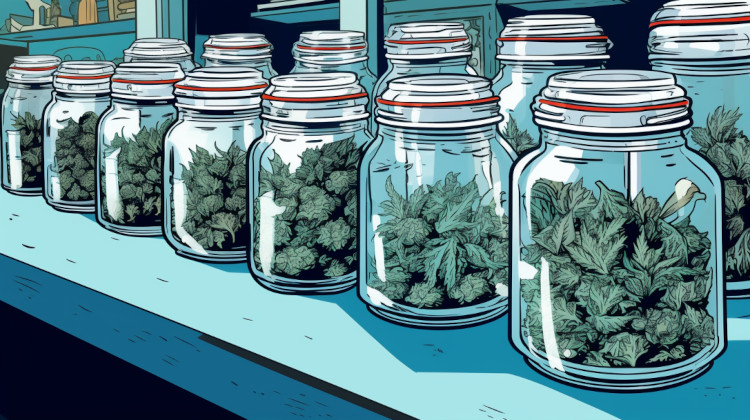
While the smell of cannabis can be enticing to some, it can also be a source of concern, especially when it becomes overwhelming or problematic. Excessive cannabis smells can lead to issues such as unhappy neighbors, misunderstandings, stinky cars, and potential challenges at work. Thankfully, there are steps you can take to control cannabis smells for a more discreet and responsible cannabis experience.
The strong aroma of cannabis can travel far, catching the attention of those nearby. If you live in close quarters with neighbors, the smell might disturb them, leading to uncomfortable situations and complaints. People might even mistakenly assume that you're consuming cannabis even if you're not, which could result in misunderstandings and awkward encounters.
At work, the lingering smell of cannabis on your clothes or belongings could raise concerns or even lead to disciplinary actions, depending on your workplace's policies and regulations. To avoid these potential problems, it's essential to manage cannabis smells effectively.
Controlling Cannabis Smells: Tips and Tricks
- Proper Storage: Storing cannabis properly can significantly reduce its smell. Invest in airtight containers made of glass or other odor-resistant materials to keep the scent contained. Avoid plastic bags or loose storage, as they can allow the smell to escape and permeate the surroundings (not to mention drying out or causing your weed to grow mold).
- Ventilation and Air Purification: If you're growing cannabis or consuming it indoors, consider using odor reduction technologies such as activated carbon filtration or ozone generation control. Proper ventilation is critical to manage the smell and create a more pleasant growing environment.9
- Discreet Consumption: Opt for vaporizers or other odorless consumption methods to minimize the smell during cannabis use. Avoid smoking in enclosed or crowded spaces, as the smell can linger and be more noticeable.
- Enclosed Growing and Processing: If you're involved in cannabis cultivation or processing, consider enclosing the operations to limit the escape of odorous emissions.10 Enhanced barriers can also help mitigate smells effectively.
- Choose Low-Odor Strains: Some cannabis strains have milder aromas than others. Selecting strains with lower odor profiles can be a considerate choice, especially in shared living spaces or places where discretion is crucial.
Through these and other methods, cannabis enthusiasts can enjoy their passion while being mindful of those around them. Responsible cannabis use involves respecting the preferences and sensibilities of others, and a little consideration about the iconic “weed smell” can go a long way in maintaining a positive relationship with both cannabis and your community.
References
- Gilbert AN, DiVerdi JA. Consumer perceptions of strain differences in Cannabis aroma. Glendinning JI, ed. PLOS ONE. 2018;13(2):e0192247. doi:https://doi.org/10.1371/journal.pone.0192247
↩︎ - Oswald IWH, Ojeda MA, Pobanz RJ, et al. Identification of a New Family of Prenylated Volatile Sulfur Compounds in Cannabis Revealed by Comprehensive Two-Dimensional Gas Chromatography. ACS Omega. 2021;6(47):31667-31676. doi:https://doi.org/10.1021/acsomega.1c04196
↩︎ - Masyita, Ayu, et al. “Terpenes and Terpenoids as Main Bioactive Compounds of Essential Oils, Their Roles in Human Health and Potential Application as Natural Food Preservatives.” Food Chemistry: X, vol. 13, Mar. 2022, p. 100217, https://doi.org/10.1016/j.fochx.2022.100217.
↩︎ - Sommano SR, Chittasupho C, Ruksiriwanich W, Jantrawut P. The Cannabis Terpenes. Molecules. 2020;25(24):5792. Published 2020 Dec 8. doi:10.3390/molecules25245792
↩︎ - McDougall JJ, McKenna MK. Anti-Inflammatory and Analgesic Properties of the Cannabis Terpene Myrcene in Rat Adjuvant Monoarthritis. Int J Mol Sci. 2022;23(14):7891. Published 2022 Jul 17. doi:10.3390/ijms23147891
↩︎ - Salehi B, Upadhyay S, Erdogan Orhan I, Kumar Jugran A, L.D. Jayaweera S, A. Dias D, Sharopov F, Taheri Y, Martins N, Baghalpour N, et al. Therapeutic Potential of α- and β-Pinene: A Miracle Gift of Nature. Biomolecules. 2019; 9(11):738. https://doi.org/10.3390/biom9110738
↩︎ - Song Y, Seo S, Lamichhane S, et al. Limonene has anti-anxiety activity via adenosine A2A receptor-mediated regulation of dopaminergic and GABAergic neuronal function in the striatum. Phytomedicine: International Journal of Phytotherapy and Phytopharmacology. 2021;83:153474. doi:https://doi.org/10.1016/j.phymed.2021.153474
↩︎ - Kleinhans NM, Sweigert J, Blake M, et al. FMRI activation to cannabis odor cues is altered in individuals at risk for a cannabis use disorder. Brain and Behavior. Published online August 30, 2020. doi:https://doi.org/10.1002/brb3.1764
↩︎ - de Ferreyro Monticelli D, Bhandari S, Eykelbosh A, Henderson SB, Giang A, Zimmerman N. Cannabis Cultivation Facilities: A Review of Their Air Quality Impacts from the Occupational to Community Scale. Environmental Science & Technology. 2022;56(5):2880-2896. doi:https://doi.org/10.1021/acs.est.1c06372
↩︎ - Seltenrich N. Odor Control in the Cannabis Industry: Lessons from the New Kid on the Block. Environmental Health Perspectives. 2022;130(6). doi:https://doi.org/10.1289/ehp11449
↩︎
The information in this article and any included images or charts are for educational purposes only. This information is neither a substitute for, nor does it replace, professional legal advice or medical advice, diagnosis, or treatment. If you have any concerns or questions about laws, regulations, or your health, you should always consult with an attorney, physician or other licensed professional.

